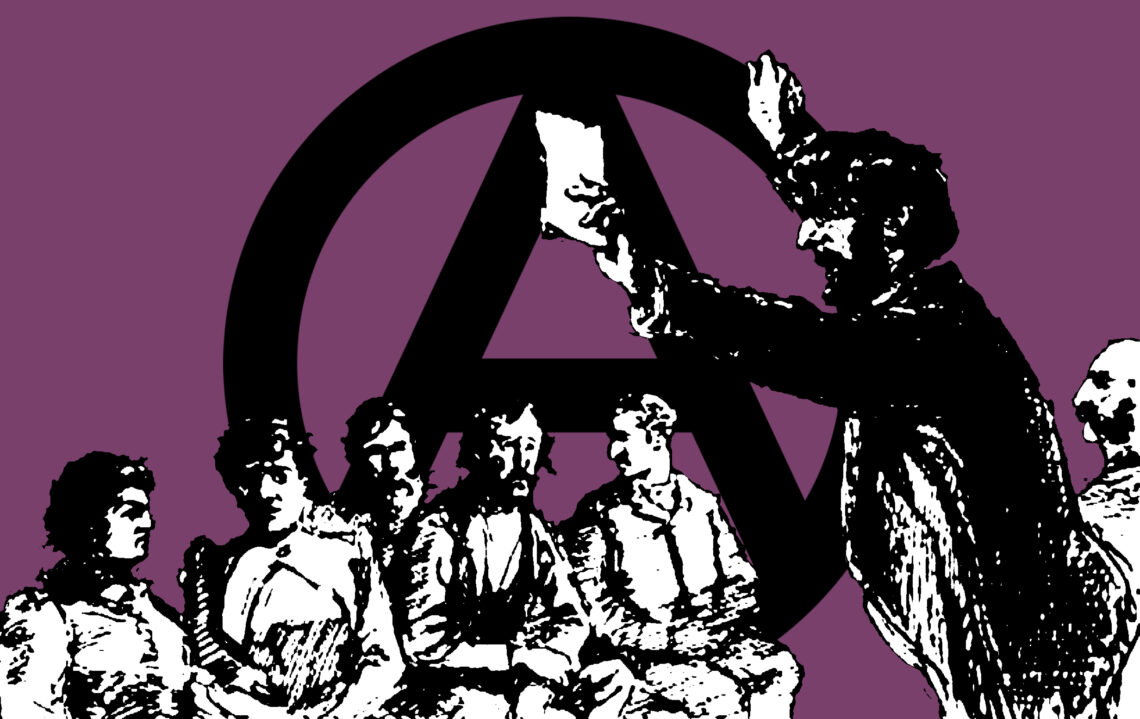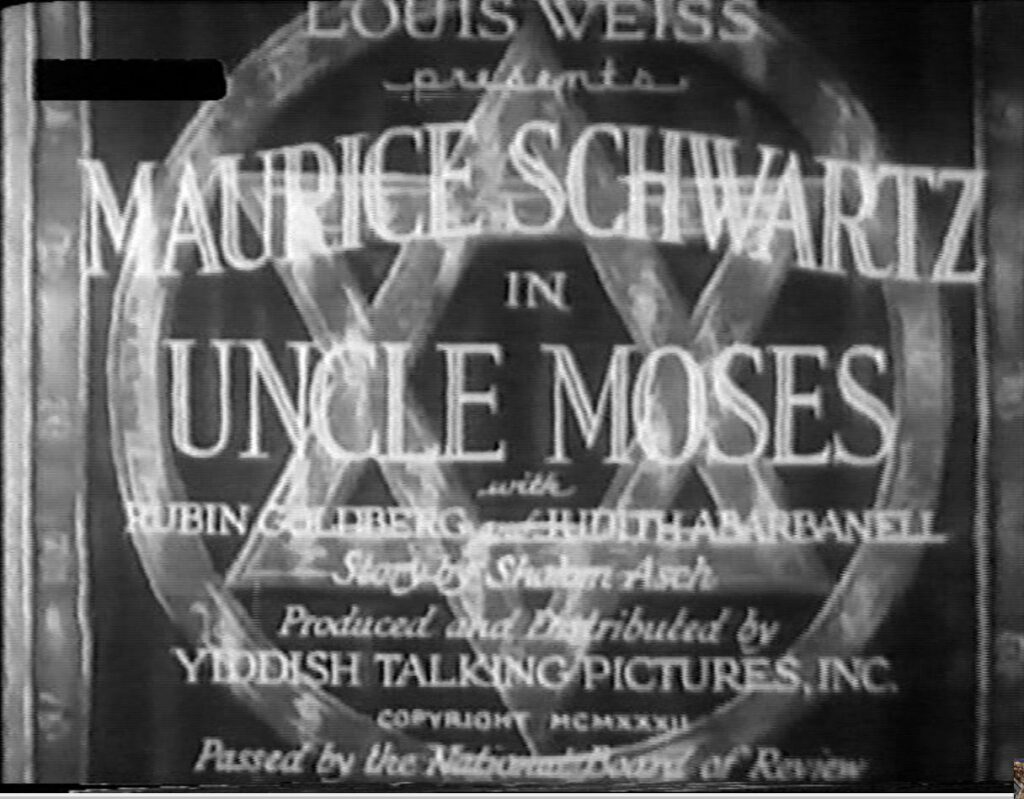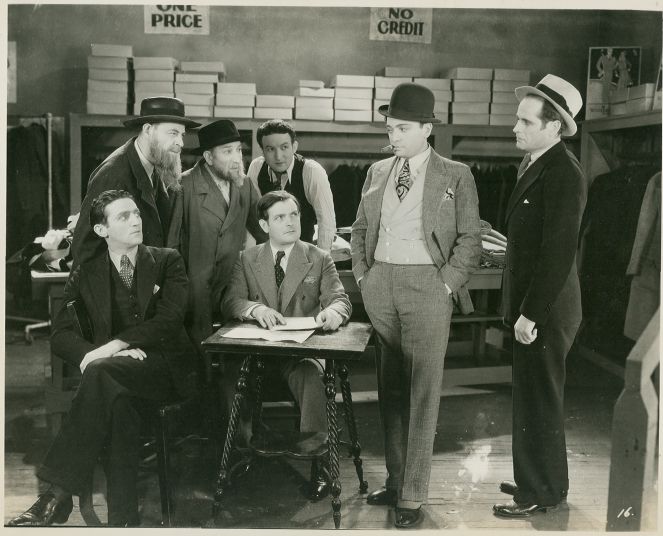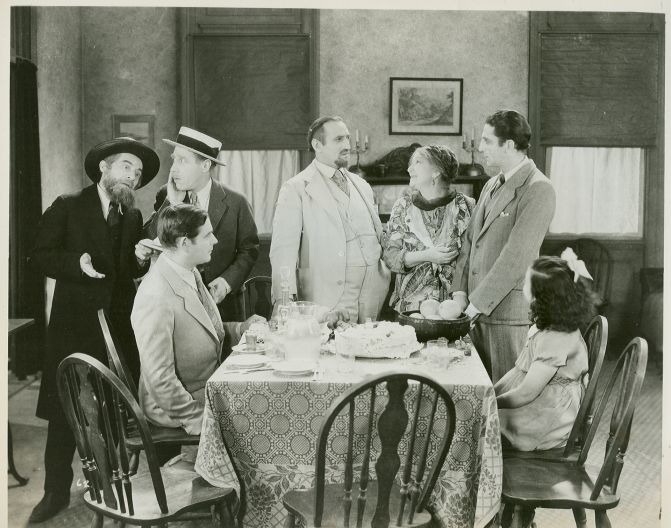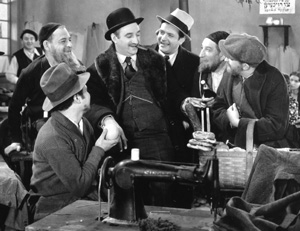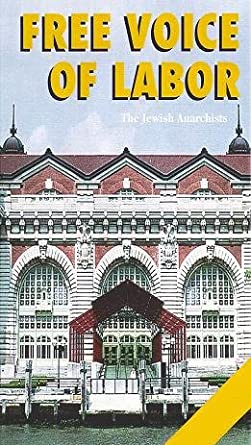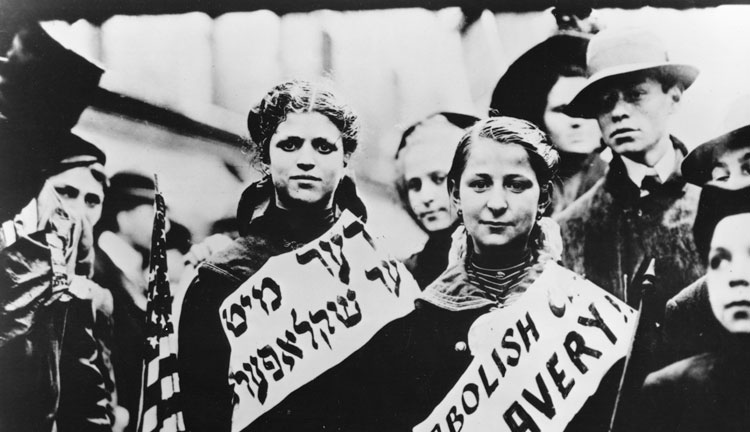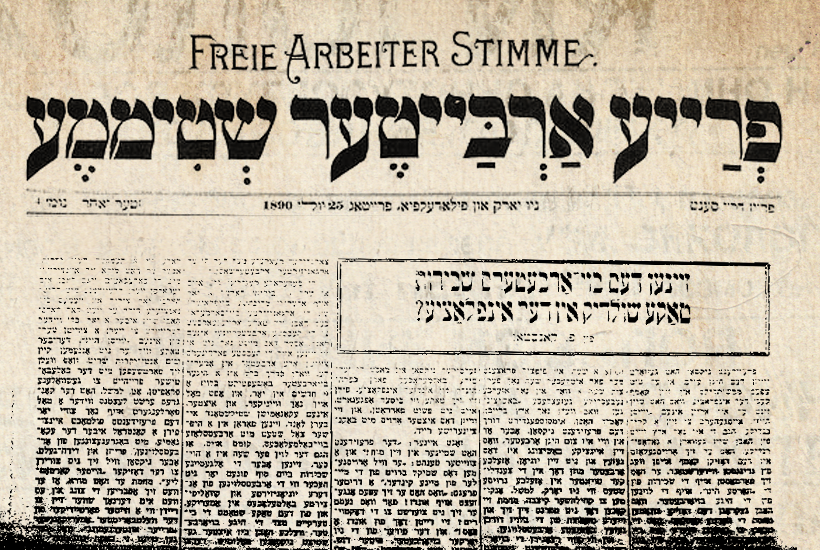The recent conference on Yiddish Anarchism is reminiscent of the 1980s documentary “Free Voice of Labor: The Jewish Anarchists” which was produced and directed by Joel Sucher and Steven Fishler. The documentary is about the Yiddish anarchist newspaper Freie Arbeiter Stimme (“free voice of labor” in Yiddish), and the Stelton Colony in Piscataway, New Jersey. The scope of the Yiddish anarchist movement was much larger than is generally known. Among those interviewed and featured in the film were anarchist historian Paul Avrich and life-long anarchist and activist Abe Bluestein who grew up in Stelton colony. The documentary used scenes from the 1932 film “Uncle Moses” where the character Uncle Moses, a sweatshop owner, exploited many people from his own town in Europe, many of whom regarded him (or pretended to) as their benefactor.
Abe Bluestein said that Jews were not just a religious group, but a national group like the Italians, Irish, Russians, Spanish, and Poles. Paul Avrich mentioned that while many immigrants were hoping for a better life in America, working conditions were often worse off in American sweatshops. Avrich said his introduction to the Yiddish anarchists was at a dinner party where many were in attendance. He was at first apprehensive, wondering if he would be accepted. Would they think he was too “square”? But once there he felt very comfortable and was accepted.

Union organizing was very important to Jewish immigrant anarchists and many were very active in the cause. But Freie Arbeiter Stimme covered more than labor, they published short fiction and discussed world events. The circulation went down because most Americans speak English, not Yiddish. Readership eventually dwindled, the Holocaust destroyed the majority of Yiddish culture and language, and assimilation continued the decline. It would seem this world has been lost. Or has it?
On January 20, 2019, YIVO Institute for Jewish Research (one of the primary organizations involved in preserving Yiddish culture and Jewish history) had a one day conference on the lost tradition of Yiddish anarchism. This conference was held in Manhattan at YIVO headquarters. I hope that this conference will be a first step in reviving the interest in Yiddish anarchist history and will lead to new scholarship.
Freie Arbeiter Stimme was started in 1897 and ran for 87 years. Its publication frequency eventually dwindled from a daily paper, to weekly, and finally monthly. Attempts were made to raise money to keep the paper going but 1977 would be its final year.
I hope Yiddish anarchism will be part of the Yiddishist movement revival.
Editor’s Note: Cornell has a copy of the Little Red Songbook in Yiddish that is available as part of their digital collections. The Labor and Working-Class History Association also has an interesting article about the history of Jewish Wobblies.
______________________________________________________________________
Other books by Paul Avrich include:
Anarchist Voices: An Oral History of Anarchism in America (1995) Princeton, NJ: Princeton University Press.
Kronstadt 1921 (1970) Princeton, New Jersey: Princeton University Press.
The Modern School Movement: Anarchism and Education in the United States (1980) Princeton, New Jersey: Princeton University Press.
Sasha and Emma: The Anarchist Odyssey of Alexander Berkman and Emma Goldman (2012) Cambridge Massachusetts & London England: The Belknap Press of Harvard University Press.

